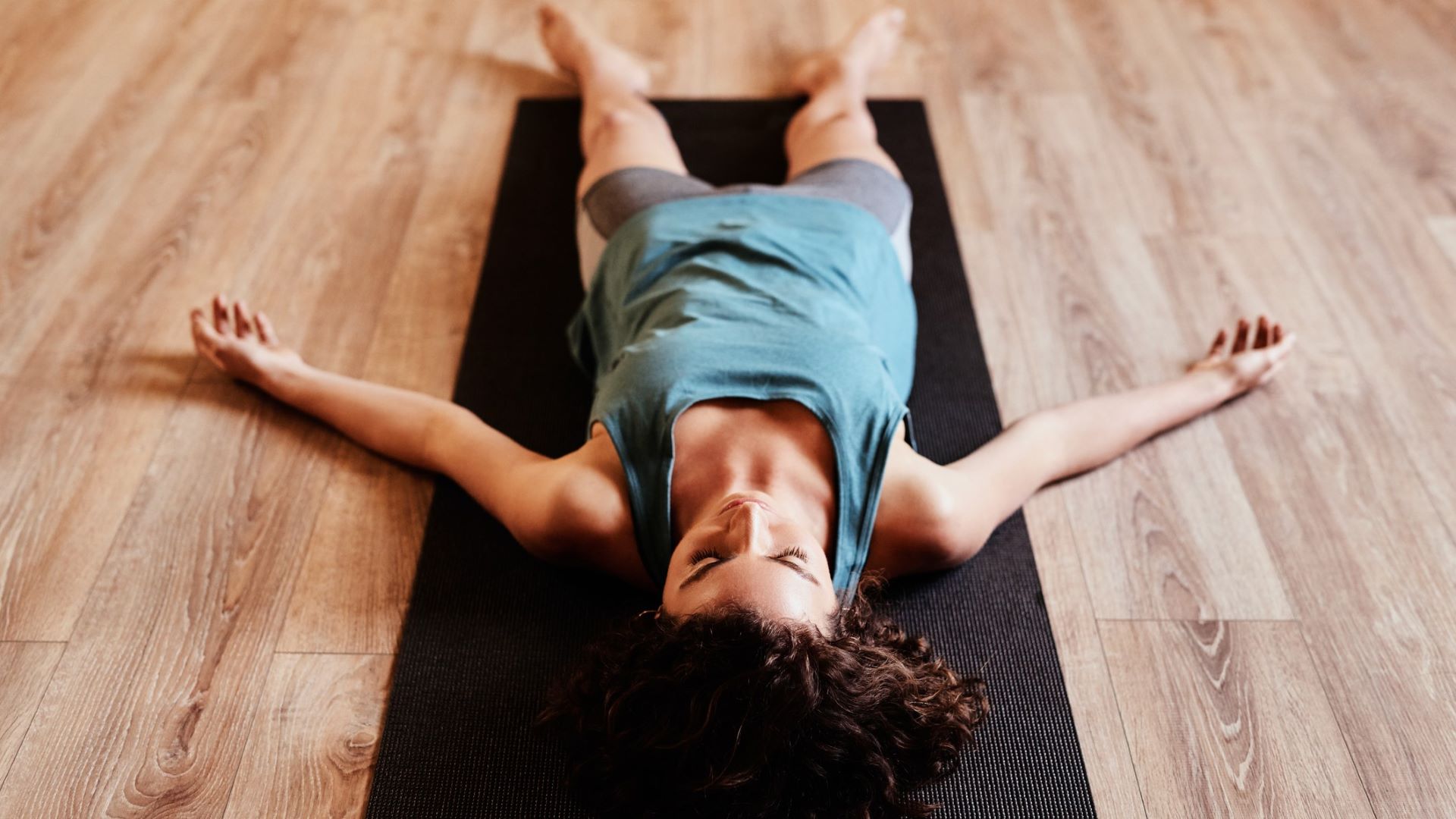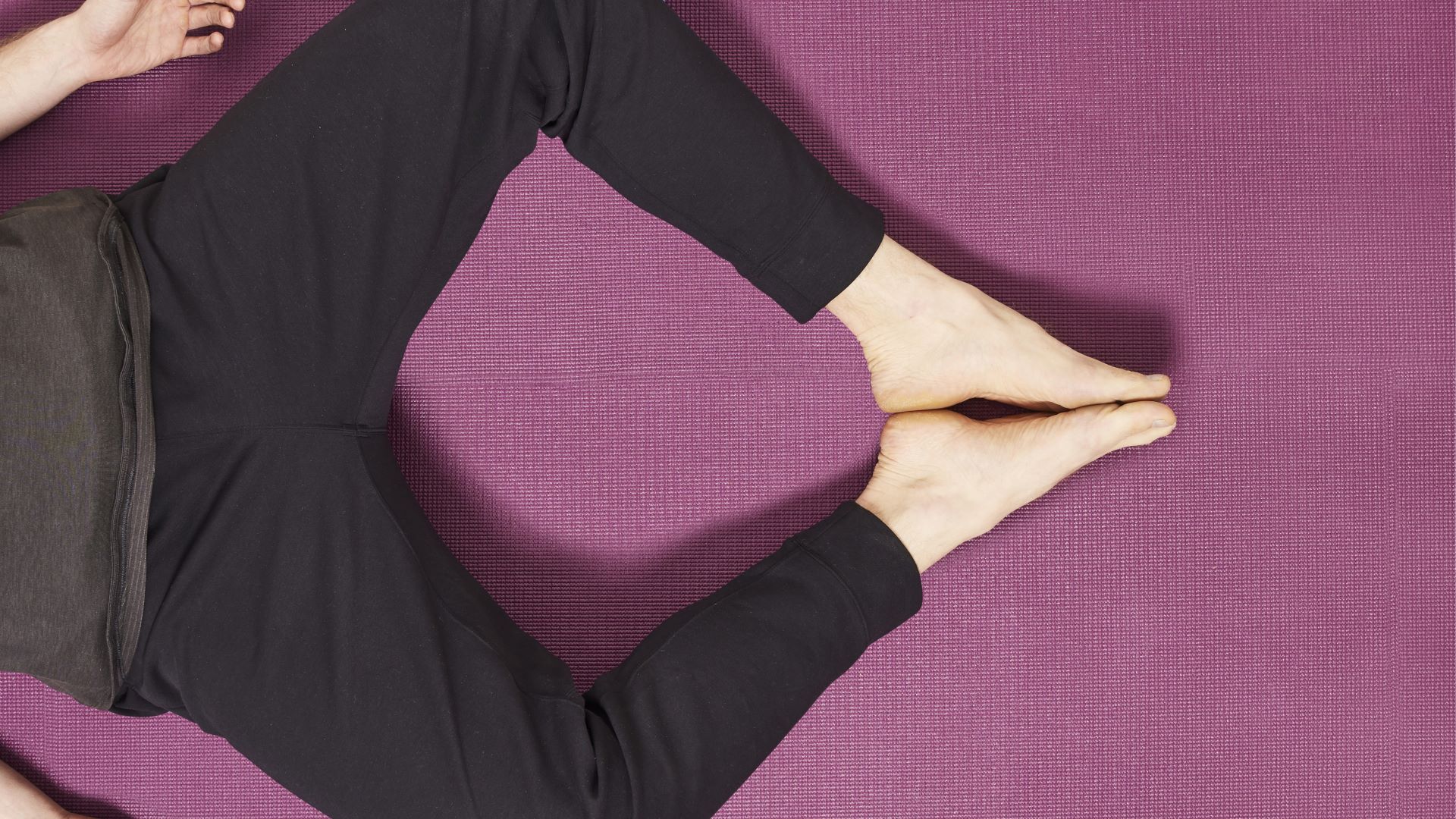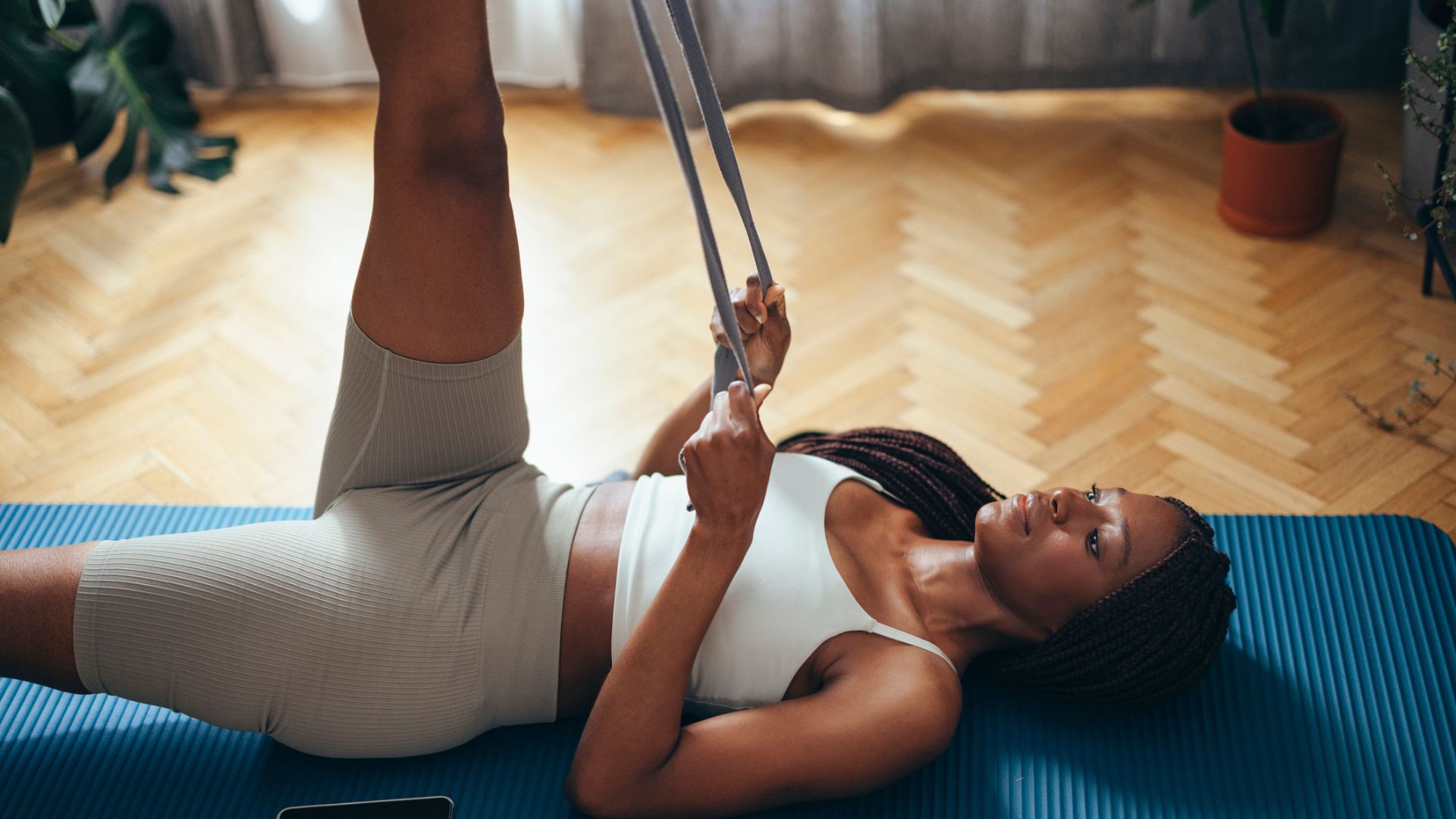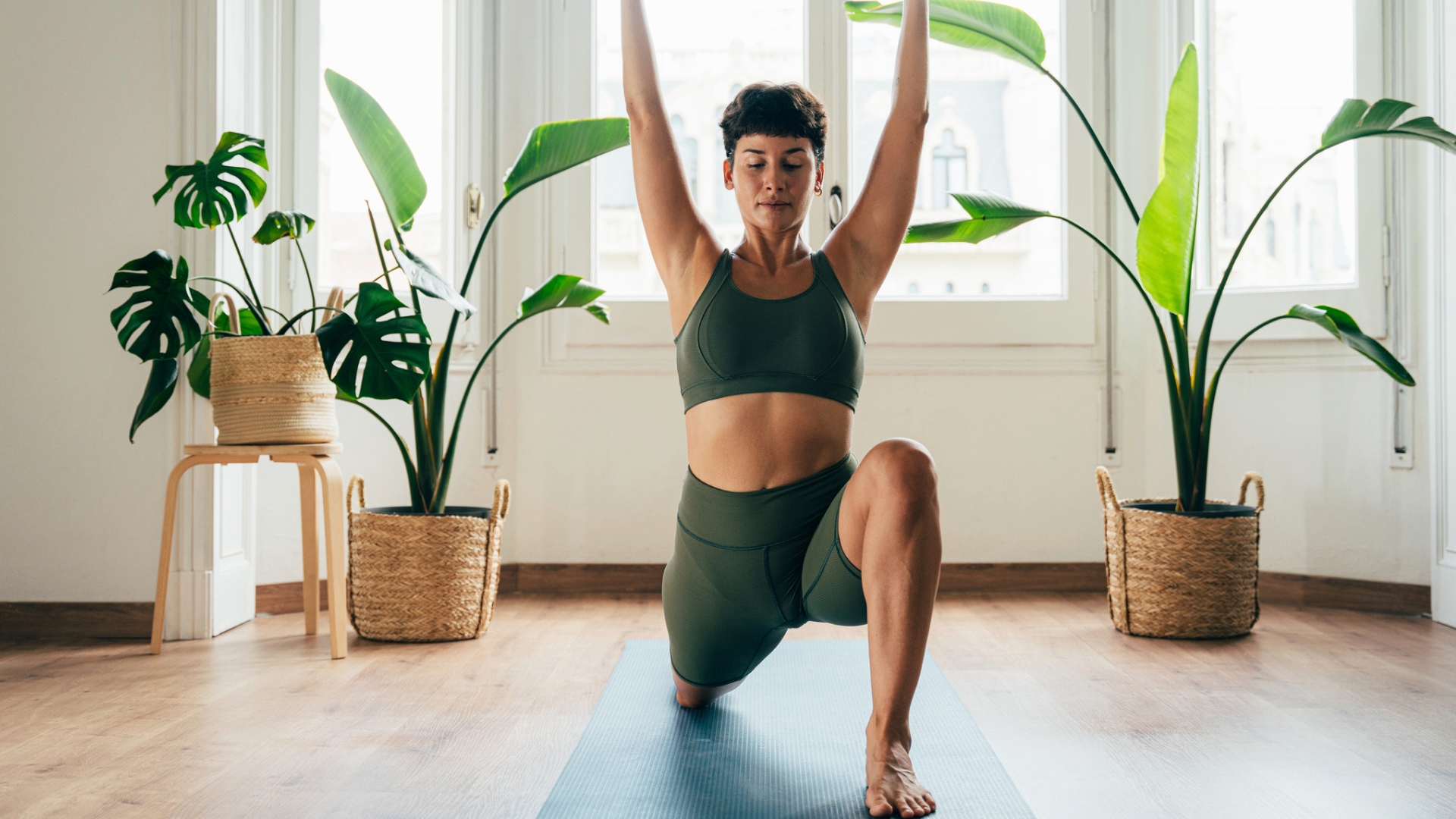Doing these four yoga poses before bed could help you fall asleep faster
Invite drowsiness in and calm your mind with this yoga teacher’s sleepy yoga flow

Getting into the right mindset for sleep can be difficult in our technology-driven, fast-paced world, but taking the time to wind down can help you drop off faster.
Yoga can promote restful sleep as it slows your breath, calms your mind, and taps into your parasympathetic nervous system (which is responsible for relaxing your body). You don't need to do a long, complicated practice, either. These four simple poses could help you calm your thoughts and prepare yourself for sleep.
"Hold each pose for a minimum of one to three minutes, or longer if you feel comfortable," advises Nick Higgins, co-founder and head of teaching at Hotpod Yoga.
"You can also listen to guided meditation, to help the mind stay softly focused."

Nick has been teaching yoga for over 10 years and is one half of Hotpod Yoga’s founding duo. His classes focus on both the mental and physical aspects of yoga. His down-to-earth approach and accessibility is what Hotpod is all about, as well as bringing fun and light-heartedness to the practice.
How to do the flow
- Child's pose
- Legs up the wall pose
- Reclining bound angle pose
- Corpse pose
The exercises
1. Child's pose

- Start in a kneeling position with your big toes touching and knees apart.
- Sit back on your heels, extend your arms forward, and lower your torso down, bringing your forehead to the mat.
- Relax your arms by your sides or extend them in front of you. Breathe deeply and allow your body to settle into the pose, releasing tension from your back, shoulders, tops of your feet, and hips.
2. Legs up the wall pose

- Either bring your legs up the wall as you lie back, keeping your hips close to the wall, or place a block or pillow under the lower back area called the ‘Sacrum’ and lift your legs into the air (not using the wall for support).
- Place your arms in a comfortable position, either by your sides or in a cactus shape.
- Close your eyes, breathe deeply, and let the gentle inversion promote relaxation and ease your legs.
3. Reclining bound angle pose

- Lie on your back and bring the soles of your feet together, allowing your knees to open to the sides. You can support your knees with blocks or cushions if needed to release any discomfort in the hips. Alternatively, you can bend the knees and let the legs fall together to feel supported and grounding for the lower back and hips, or alternate from one side then to the other.
- Place your hands on your belly or extend them by your sides with palms facing up. Take some nice flowing steady breaths, allowing your body to soften into the pose.
4. Corpse pose

- Lie on your back with your legs extended and arms by your sides, palms facing up.
- Close your eyes, relax your jaw, and shake your head gently from side to side, easing your neck and shoulders.
- Take a couple of deeper, slower breaths releasing any tension and let yourself drift.
Need some support for your gentle practice? Our guide to the best yoga mats can help.
Get the Fit&Well Newsletter
Start your week with achievable workout ideas, health tips and wellbeing advice in your inbox.

Lou Mudge is a Health Writer at Future Plc, working across Fit&Well and Coach. She previously worked for Live Science, and regularly writes for Space.com and Pet's Radar. Based in Bath, UK, she has a passion for food, nutrition and health and is eager to demystify diet culture in order to make health and fitness accessible to everybody.
Multiple diagnoses in her early twenties sparked an interest in the gut-brain axis and the impact that diet and exercise can have on both physical and mental health. She was put on the FODMAP elimination diet during this time and learned to adapt recipes to fit these parameters, while retaining core flavors and textures, and now enjoys cooking for gut health.
-
 Build blockbuster arms and abs with Chris Hemsworth's go-to dumbbell circuit
Build blockbuster arms and abs with Chris Hemsworth's go-to dumbbell circuitAll you need are adjustable dumbbells and 20 minutes
By Sam Rider Published
-
 Forget crunches—if I wanted to improve core strength I'd do this neck-friendly Pilates workout
Forget crunches—if I wanted to improve core strength I'd do this neck-friendly Pilates workoutAnd it takes just five minutes
By Maddy Biddulph Published
-
 I'm a yoga teacher and these are the three postures I do daily to keep my hips happy and healthy
I'm a yoga teacher and these are the three postures I do daily to keep my hips happy and healthyYoga Do these morning or night to avoid tight hips
By Yanar Alkayat Published
-
 A yoga instructor recommends doing these four standing wall stretches whenever you want to relieve back pain
A yoga instructor recommends doing these four standing wall stretches whenever you want to relieve back painYoga A quick mobility routine that could provide relief
By Alice Porter Published
-
 An expert yoga teacher recommends doing this quick, four-pose yoga flow to get ready for the day
An expert yoga teacher recommends doing this quick, four-pose yoga flow to get ready for the dayYoga Lift your energy levels with this short routine
By Lou Mudge Published
-
 A yoga teacher recommends doing this one move if you want to improve your joint health and mobility
A yoga teacher recommends doing this one move if you want to improve your joint health and mobilityYoga This single, versatile movement has a host of health benefits—so I gave it a try
By Lou Mudge Published
-
 These five poses can help you beat bloating, according to a yoga teacher
These five poses can help you beat bloating, according to a yoga teacherWorkout Ease digestive pain and relieve wind with this quick yoga flow
By Lou Mudge Published
-
 A yoga teacher recommends doing these four simple moves to aid digestion
A yoga teacher recommends doing these four simple moves to aid digestionMindfulness Ease digestive issues by doing some regular, gentle exercise
By Lou Mudge Published
-
 A yoga instructor recommends doing these eight gentle poses when you're struggling to sleep
A yoga instructor recommends doing these eight gentle poses when you're struggling to sleepYoga Get ready for bed with these eight calming asanas
By Lou Mudge Published
-
 A yoga instructor recommends doing these three breathing exercises before bed to help you fall asleep faster
A yoga instructor recommends doing these three breathing exercises before bed to help you fall asleep fasterMindfulness Taking the time to do breathwork before bed could help you drift off quickly and sleep more peacefully
By Lou Mudge Published